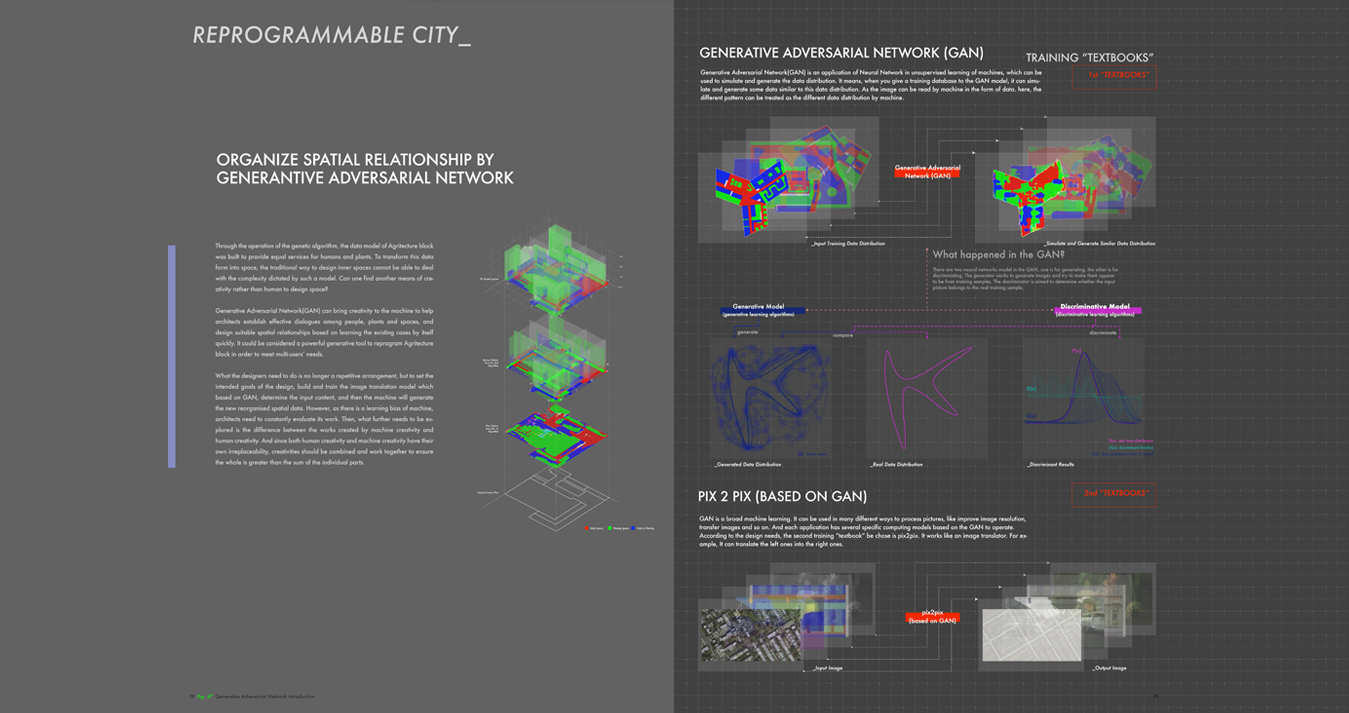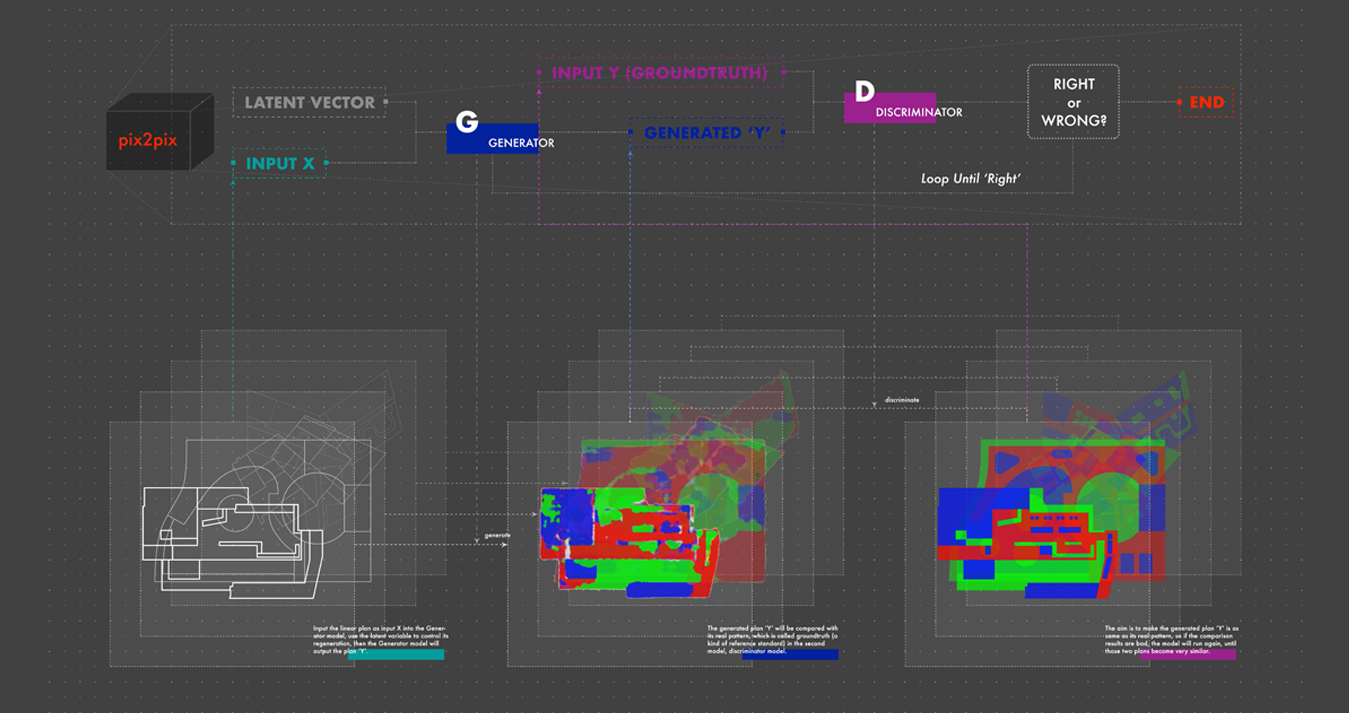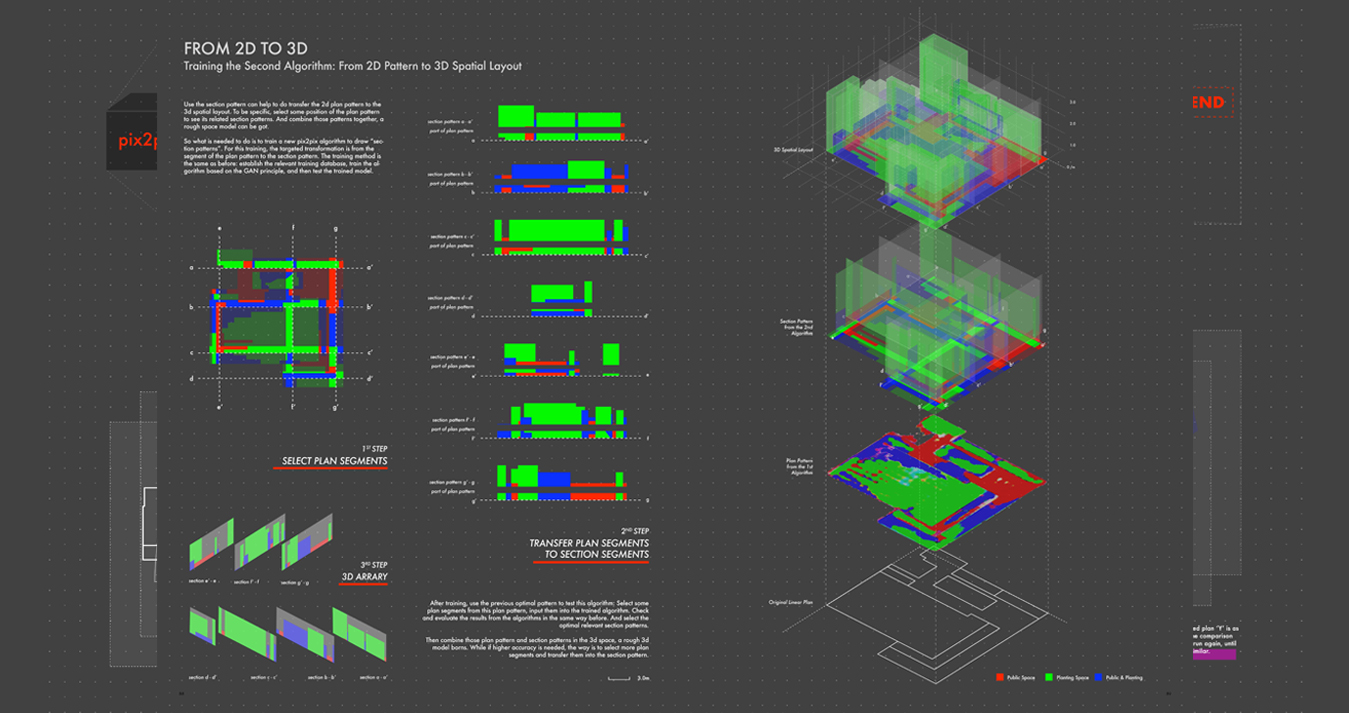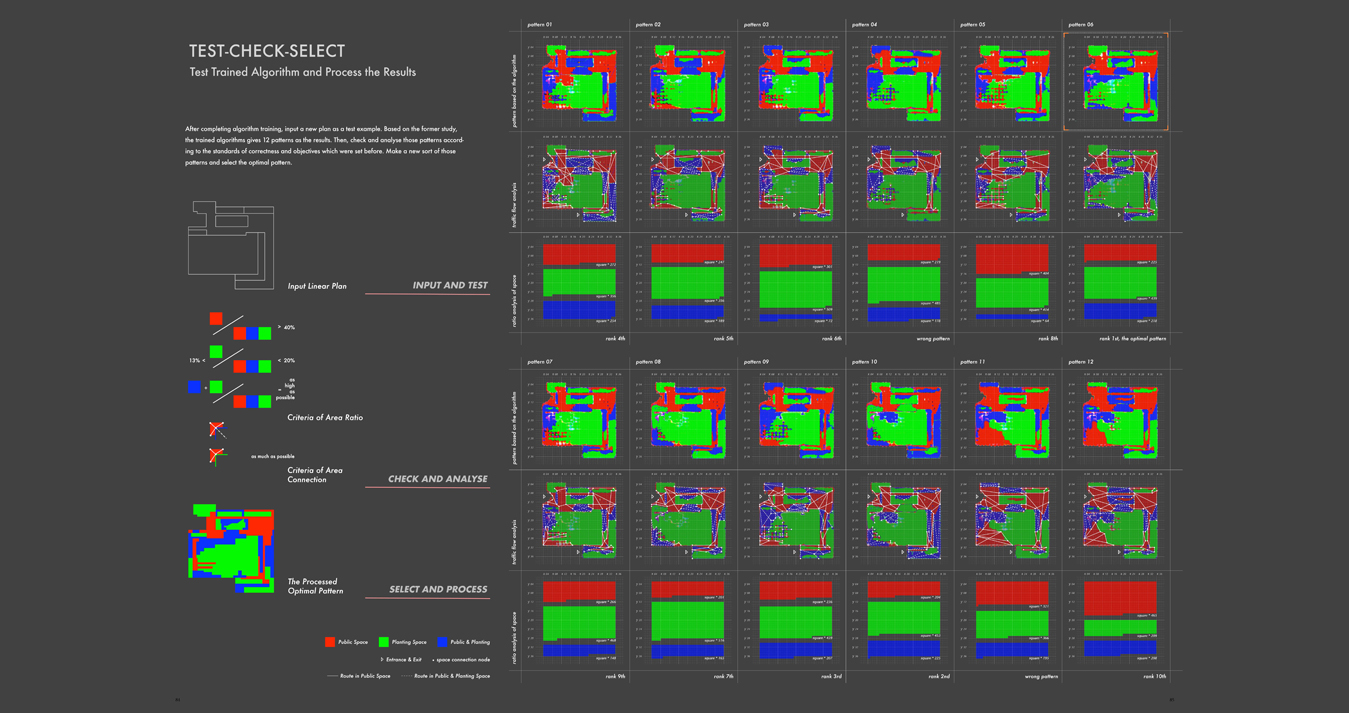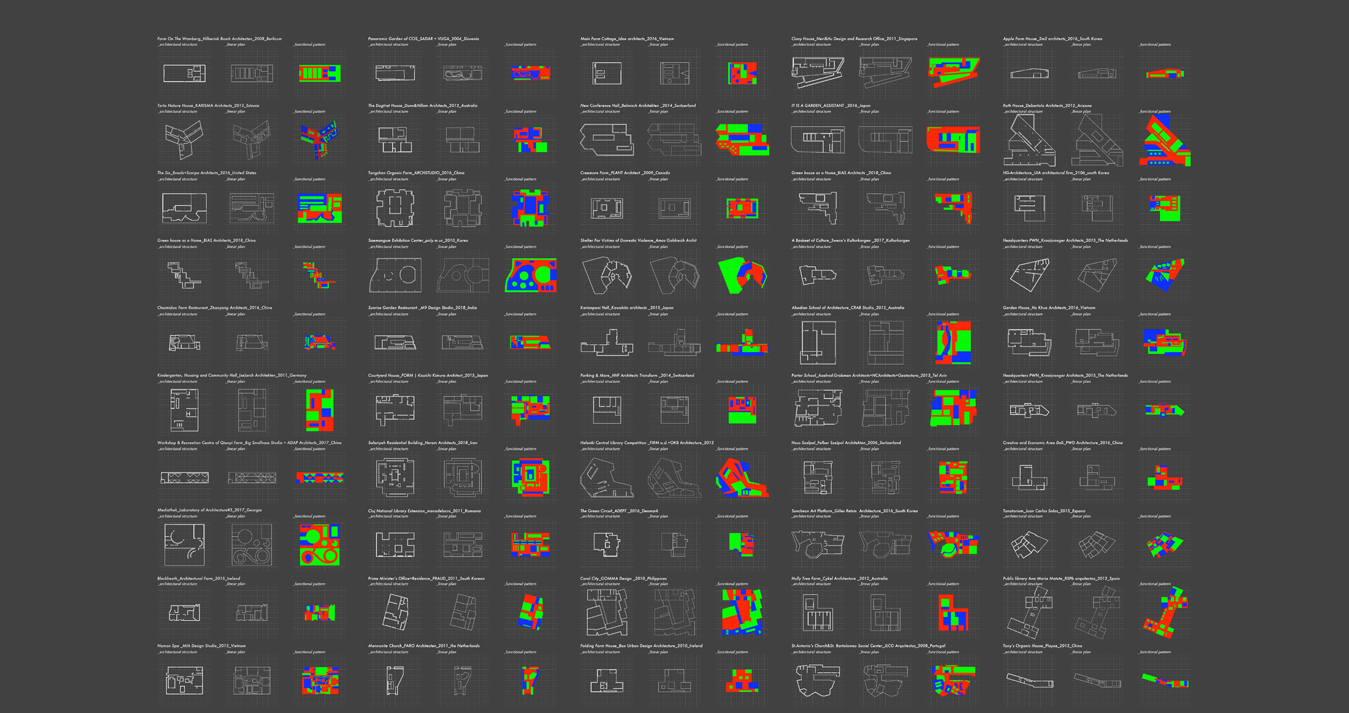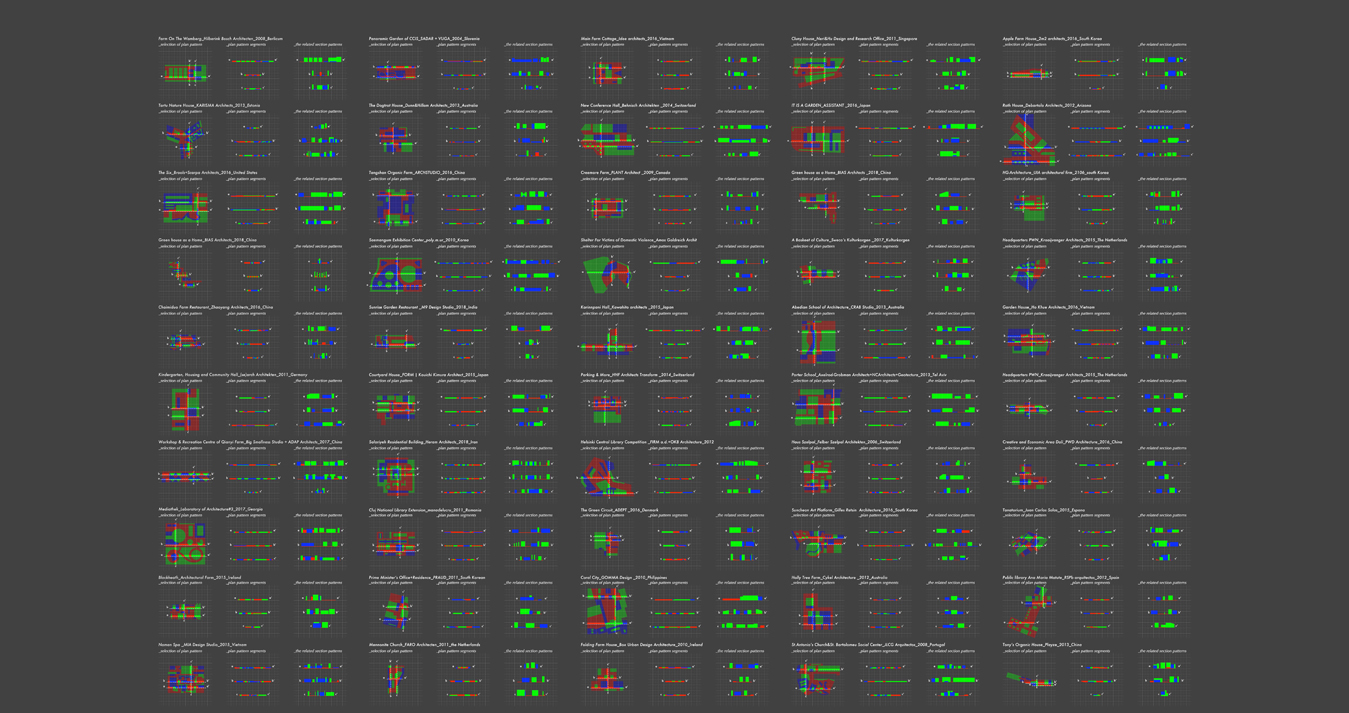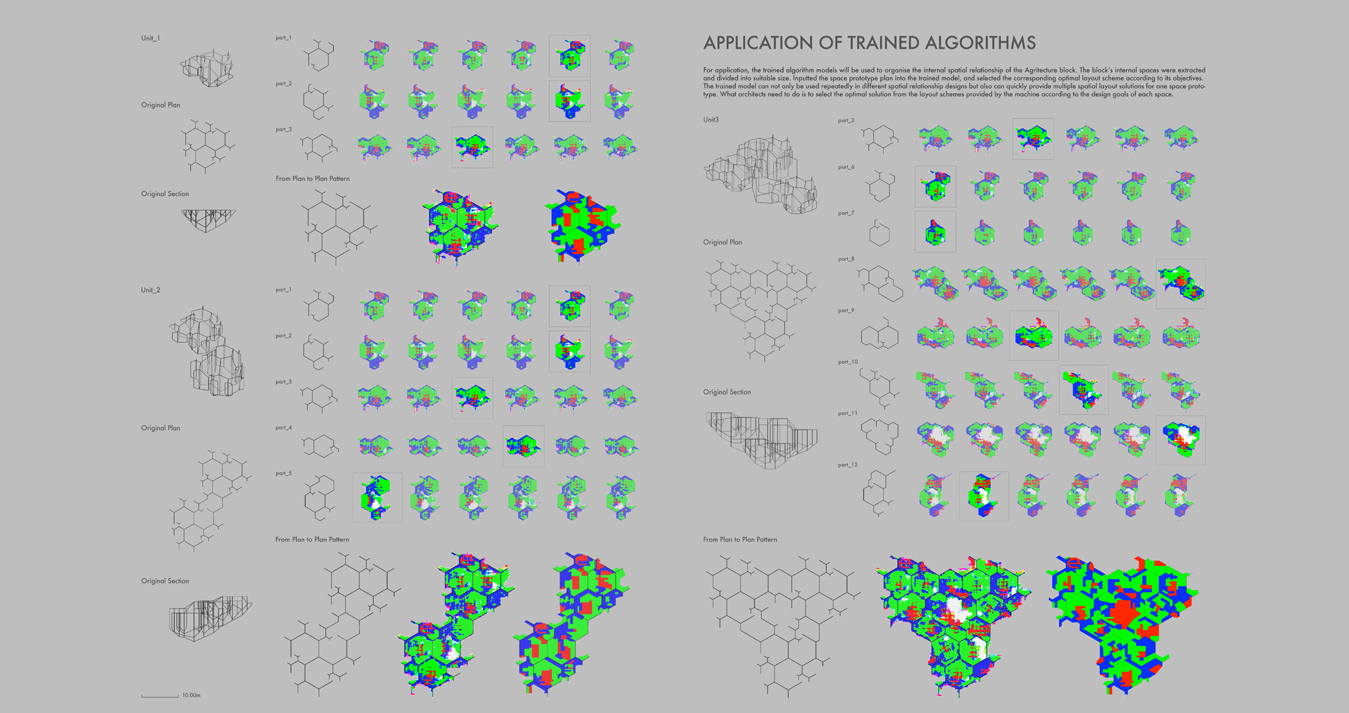
Re-programmable Architecture
Reprogrammable city explores the nature of creativity when technology is challenging what means to be human. Particularly how the latest advances in Machine Learning and Artificial Intelligence are accelerating the pace of change of our culture and society. Currently, technology is entering in the most tacit conceptual spaces that historically are built based on experience, embodiment and the accumulative employment of successive layers of knowledge and history. This unprecedented technological shift is expanding human forms of thinking opening new dialogues between human and machine.
In a future scenario where cities are continuously re-programmed and food production is part of the urban fabric: How can we learn from the history of greenhouses architecture in order to inform our decision making? What are the new design processes emerging from working with algorithms that compute history and culture? What are the new dialogues emerging from these algorithms between human and machine?
A human machine dialogue about the history of greenhouse architecture: The design experiment uses a Generative Adversarial Network. This class of machine learning framework employs two neural networks. The generative network that creates candidates based on a database and the discriminator network that evaluates them. The generator learns from a latent space of data distribution while the discriminator distinguishes candidates produced by the generator from the true data distribution. The generative network training objective is to fool the discriminator network and increase its margin of error. A known data-set serves as the initial training data for discriminator, the role of the designer involves training the data-set of the discriminator.
TEXT BY ENRIQUETA LLABRES
- [Category] MArch Design Thesis
- [Institution] BPro RC18. Bartlett School of Architecture
- [year] 2019-2020
- [Leaders] Enriqueta Llabres and Zach Fluker
- [Students] Jingyun Zhao, De Yu and Zhenyu Sun
- [Tutors] Dimitra Bra, Maria Paneta, Martyn Carter, Sheng-Yang Huang, Mohammed Makki and Ilaria Di Carlo
- [Partners] Rhino CFD, Wallacei
Re-programmable Architecture
Reprogrammable city explores the nature of creativity when technology is challenging what means to be human. Particularly how the latest advances in Machine Learning and Artificial Intelligence are accelerating the pace of change of our culture and society. Currently, technology is entering in the most tacit conceptual spaces that historically are built based on experience, embodiment and the accumulative employment of successive layers of knowledge and history. This unprecedented technological shift is expanding human forms of thinking opening new dialogues between human and machine.
In a future scenario where cities are continuously re-programmed and food production is part of the urban fabric: How can we learn from the history of greenhouses architecture in order to inform our decision making? What are the new design processes emerging from working with algorithms that compute history and culture? What are the new dialogues emerging from these algorithms between human and machine?
A human machine dialogue about the history of greenhouse architecture: The design experiment uses a Generative Adversarial Network. This class of machine learning framework employs two neural networks. The generative network that creates candidates based on a database and the discriminator network that evaluates them. The generator learns from a latent space of data distribution while the discriminator distinguishes candidates produced by the generator from the true data distribution. The generative network training objective is to fool the discriminator network and increase its margin of error. A known data-set serves as the initial training data for discriminator, the role of the designer involves training the data-set of the discriminator.
TEXT BY ENRIQUETA LLABRES


